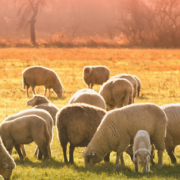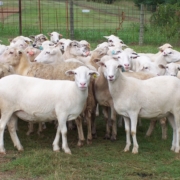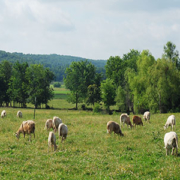The ABC(DE) of Animal Health
 Print This Post
Print This Post
By Linda Coffey, Livestock Specialist
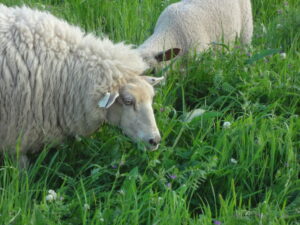
A is for appetite. Photo: NCAT
I have been raising livestock since I was a young child, and I have learned some things in doing so. Today, I want to share an easy way to think through animal observations. These basic indicators of animal health will allow you, the livestock manager, to see early warning signs and take effective action. While my experience is mostly with sheep and goats, these principles apply to other livestock, as well.
The alphabet will help you remember: A, B, C, D, E.
A is for Appetite. Healthy animals will be eating eagerly, or chewing their cud. Watch the group and see if all are busy. An animal that is not interested in food has something going on. Are they in labor? Did they eat too much grain, throwing their rumen microbes off balance? Are they suffering from internal parasites? Are they suffering from an illness? Investigate!
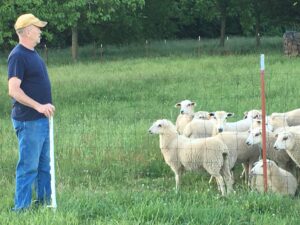
B is for behavior. Photo: NCAT
B is for Behavior. When you observe often, you will understand what is normal for the animals you are raising. For flocking animals, when one is apart from the group, that is a sign that something may be wrong. When one seems agitated while others are calm, or seems in pain or distress, investigate! If all are agitated, perhaps predators (including domestic dogs) have been harassing the stock. Keep in mind that low stress is important for keeping animals calm and healthy.
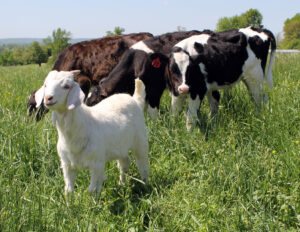
C is for coat. Photo: NCAT
C is for Coat. Healthy cattle and goats will have a smooth, shiny coat. Healthy sheep will have wool that looks good, too. Scruffy appearance or dull, roughed-up coats may mean a mineral imbalance, an illness, or parasites (internal or external), although it could just be a change from winter to summer coat.
D is for Demeanor. When we watch an animal (or a human), we can tell how they feel by how they carry themselves and how they move. Posture and gait reflect physical comfort and strength.
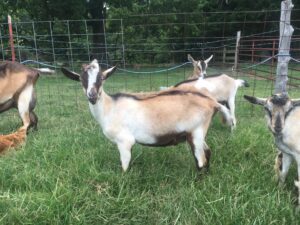
D is for demeanor. Photo: NCAT
E is for Energy. Healthy animals have an alert, energetic appearance. They keep up with the group and do not lag behind; they are lively and vigorous and show vitality. Illness, poor nutrition, or extreme heat will impact this. Look for causes, and be sure the animals are well supplied with cool water, ample forage, appropriate mineral mix, adequate energy and protein. If they have all of these things but still are low in energy, suspect illness, including internal parasite infection.
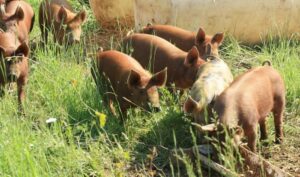
E is for energy. Photo: NCAT
The ABCDE’s of Animal Observation are simple but very important. Use them to assess the health of your stock and to figure out whether your management is working. For ruminant animals, if you are noticing problems with ruminant animals, the first step is to examine grazing management and nutrition.
Resources:
This blog is produced by the National Center for Appropriate Technology through the ATTRA Sustainable Agriculture program, under a cooperative agreement with USDA Rural Development. ATTRA.NCAT.ORG.


 NCAT
NCAT
